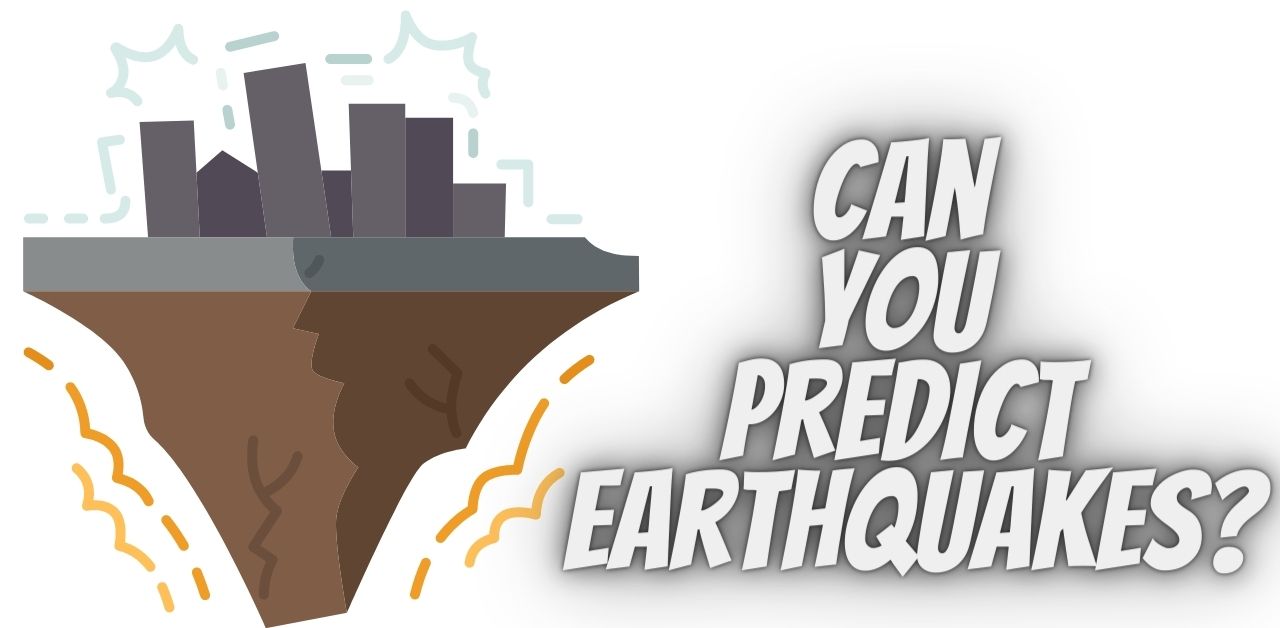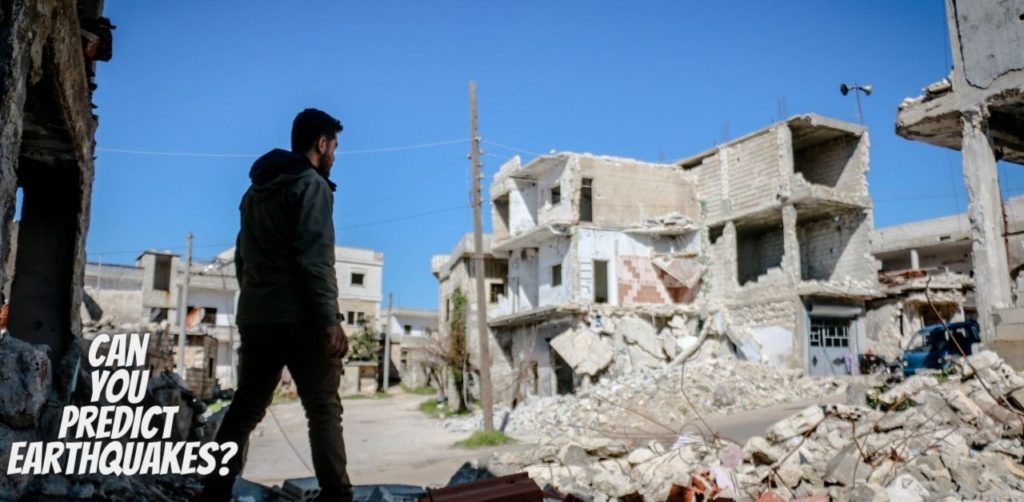Can you predict earthquakes?

Predicting Earthquakes
Many lives certainly would be saved if scientists could predict earthquakes on a short-term basis, say within hours or days of the actual event. Despite knowing how earthquakes occur when a rock body accumulates strain beyond its elastic limit, seismologists still cannot predict just when the rock will rupture.

Short-term predictions, therefore, are not yet a reality, and some seismologists believe they never will be. What we have been successful at is predicting earthquakes on a long-term basis using statistical probabilities. These long-term predictions are similar to weather forecasts in that they give the probability of an earthquake occurring within a given time period. In this section we will take a brief look at the current status of both short- and long-term earthquake predictions.
Short-Term Predictions
When strain energy is released along a fault, or series of faults, it usually takes place as a cluster of separate events. Small earthquakes called foreshocks will sometimes precede the major release of energy, known as the main shock, which can be followed by a series of less powerful aftershocks. In addition to the foreshocks, phenomena called earthquake precursors sometimes occur just
prior to the main shock. Precursors include such things as changes in land elevation, water levels and dissolved gases in wells, and unusual patterns of low-frequency radio waves.
Earthquake precursors can largely be explained by the way strain accumulates in rocks on a microscopic scale. Here we can use the bending of a wooden rod as an analogy. As the wood accumulates strain and gets near its elastic limit, individual wood fibers will start separating and produce a subtle cracking sound.

While this is happening, the volume of the rod increases slightly as air space develops between the fibers. Ultimately the strain becomes so great that the fibers are no longer able to resist the force, at which point the rod ruptures. Rocks behave similarly in that as strain accumulates, individual mineral grains begin to separate and develop microscopic cracks prior to rupturing. This model then can explain the occurrence of some foreshocks and the following earthquake precursors:
- Increase in foreshocks—microcracks forming prior to complete rupture, or main shock.
- Slight swelling or tilting of the ground surface—microcracks increasing the rock volume.
- Decreased electrical resistance—water entering new void spaces is more conductive than surrounding minerals.
- Fluctuating water levels in wells—water entering new cracks causes water levels to lower; levels rise when voids close again.
- Increased concentration of radon gas in groundwater—new cracks allow the gas, a radioactive decay product of uranium, to escape from rocks and enter wells.
- Generation of radio signals—changes in rock strain or movement of saline groundwater.
